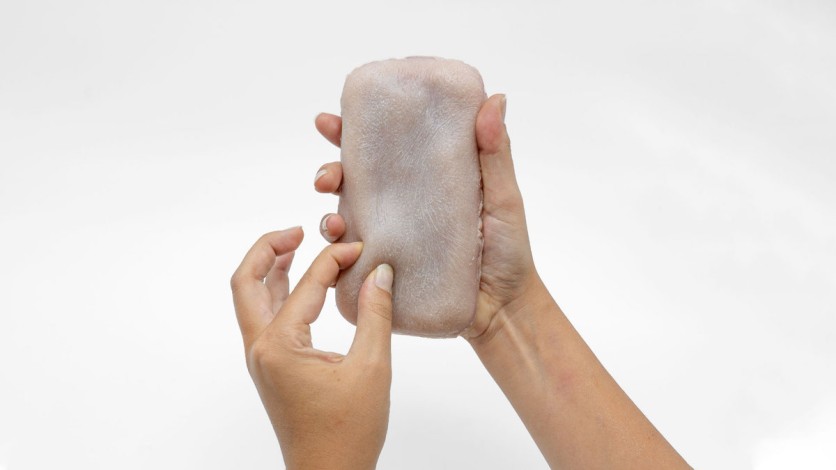
Fiddling with smartphones already feels like interacting with another human being, but new artificial skin for devices takes it a step further.
Designed to use as phone cases, computer touch pads, and smartwatch bands, the newly developed artificial skin called the Skin-on interface not only looks and feels like actual human skin, but it can also detect and respond to touch.
Bizarrely Human Artificial Skin
According to the University of Bristol, a group from its Faculty of Engineering partnered with Telecomm ParisTech and Sorbonne University to come up with the creepy yet impressive artificial skin.
In a new paper released by the team, they explained how they were able to achieve the hyperrealistic skin casing, from its look to its sensory capabilities.
The researchers constructed a three-layer silicone membrane with a surface textured layer, an electrode layer of conductive threads, and a hypodermis layer. This results in a much more natural casing that can detect various gestures and grasps by users, including grabbing, stretching, and twisting.
Additionally, the artificial skin will associate specific gestures with emotions. For instance, tapping is reportedly interpreted as a way to seek attention and a sudden slap to the phone accessory means anger.
To demonstrate how touch and gestures on the Skin-on interface can convey messages, the team created a phone case, a computer touch pad, and a smartwatch using the artificial skin.
"One of the main use of smartphones is mediated communication, using text, voice, video, or a combination. We implemented a messaging application where users can express rich tactile emotions on the artificial skin," lead author Marc Teyssier explained in the news release, adding that the intensity of the touch dictates the size of the emojis.
Tickling the artificial skin will produce a laughing emoji, while tapping will give users a surprised emoji.
A Future With More Humanlike Devices?
With the new paper detailing the steps for replication, it may not be long before the trend of more humanlike devices and accessories starts hitting the market.
For their part, Teyssier and the team are planning to develop artificial skin that are even more realistic. Initial research has already begun on embedding hair and temperature features that could enable goosebumps on future devices.
"This work explores the intersection between man and machine. We have seen many works trying to augment human with parts of machines, here we look at the other way around and try to make the devices we use every day more like us, i.e. human-like," said Dr. Anne Roudaut, an associate professor at the University of Bristol who supervised the research.
ⓒ 2025 TECHTIMES.com All rights reserved. Do not reproduce without permission.




